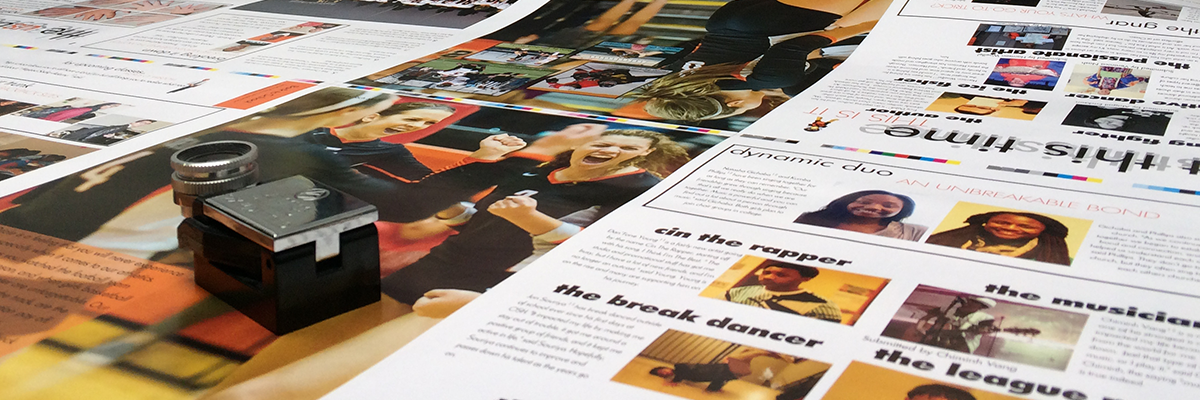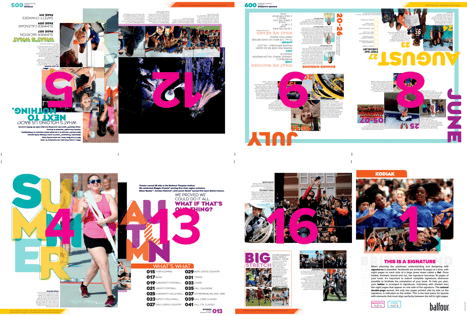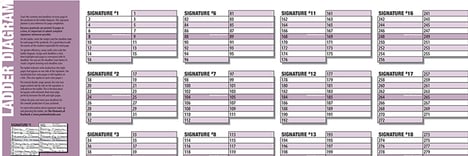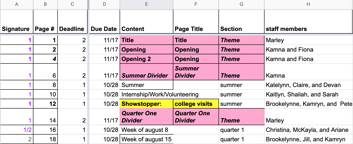
We’re not talking about Getting Sturdy or Hitting the Griddy. We’re talking signature completion so your pages can dance their way through the presses.
In Back to Basics
Have you ever thought about how a book is actually printed? Perhaps you’ve imagined a giant copier printing one page at a time. That’s not how it works in the publishing industry. In fact, your yearbook is printed on large sheets of paper with eight pages on each side - 16 pages total. These 16-pages sheets are called signatures. Eight pages that fall on the side of signature are called a flat. After these sheets are printed, they are fed to another machine that folds the papers (think about an old-school map), after which the 16 pages fall in consecutive order. Those folded signatures go through several more steps before they end up bound in your book and delivered to you, but that’s a whole other blog post! You can check out both sides of a sample signature here.

A flat is 8 pages on one side of a signature. Notice in this sample that it is not pages 1-8. After the signature is printed and folded, the pages from both flats end up in consecutive order.
Keep signatures in mind when planning your ladder
Besides arming yourself with some great trivia facts, understanding signatures and the printing process can help get your books in your hands more efficiently and quickly. When you plan your ladder and map out your deadlines, always consider signature completion. When you submit a complete signature, these pages can be printed and stored until the rest of your book is finished. That way, the printing cycle is spread throughout a period of time instead of all being printed at once. Thousands of different yearbooks are printed annually at your publisher's print facility, and most schools want their books delivered in a few-week window in late spring or early fall. So submitting complete signatures throughout the year helps ensure efficient production of your book, particularly in the critical time after you submit your final deadline. Another consideration is if you plan to use specialty ink, a 5th color like a Pantone color that is not created using CMYK. Keeping these inks within a signature or flat will be more budget-friendly as it would only include one run through the press.
 Check out your kit for a Balfour paper ladder which can be color-coded by deadline. It’s a great visual to see signature completion. For more tips on ladders, check out this post.
Check out your kit for a Balfour paper ladder which can be color-coded by deadline. It’s a great visual to see signature completion. For more tips on ladders, check out this post.
 Some yearbook staffs choose to use spreadsheets for a ladder. This makes sorting by deadline and other topics easier. You can add a column for signature number and deadline and see any pages that are inhibiting signature completion.
Some yearbook staffs choose to use spreadsheets for a ladder. This makes sorting by deadline and other topics easier. You can add a column for signature number and deadline and see any pages that are inhibiting signature completion.
Plan to win
It’s important to keep in mind that even if a signature is only missing one page, it cannot be printed. Work with your Balfour rep to help decide how many signatures per deadline you should submit. This number will change based on the number of signatures and number of deadlines you have. Deadlines do not have to be only completed signatures, but the more you complete, the better.
You don’t have to wait for a deadline
Let’s say you have a signature with just a spread or two missing. You don’t have to wait until your next deadline. As soon as you can get that spread finished up, go ahead and submit it so the signature can be moved through the printing process.

